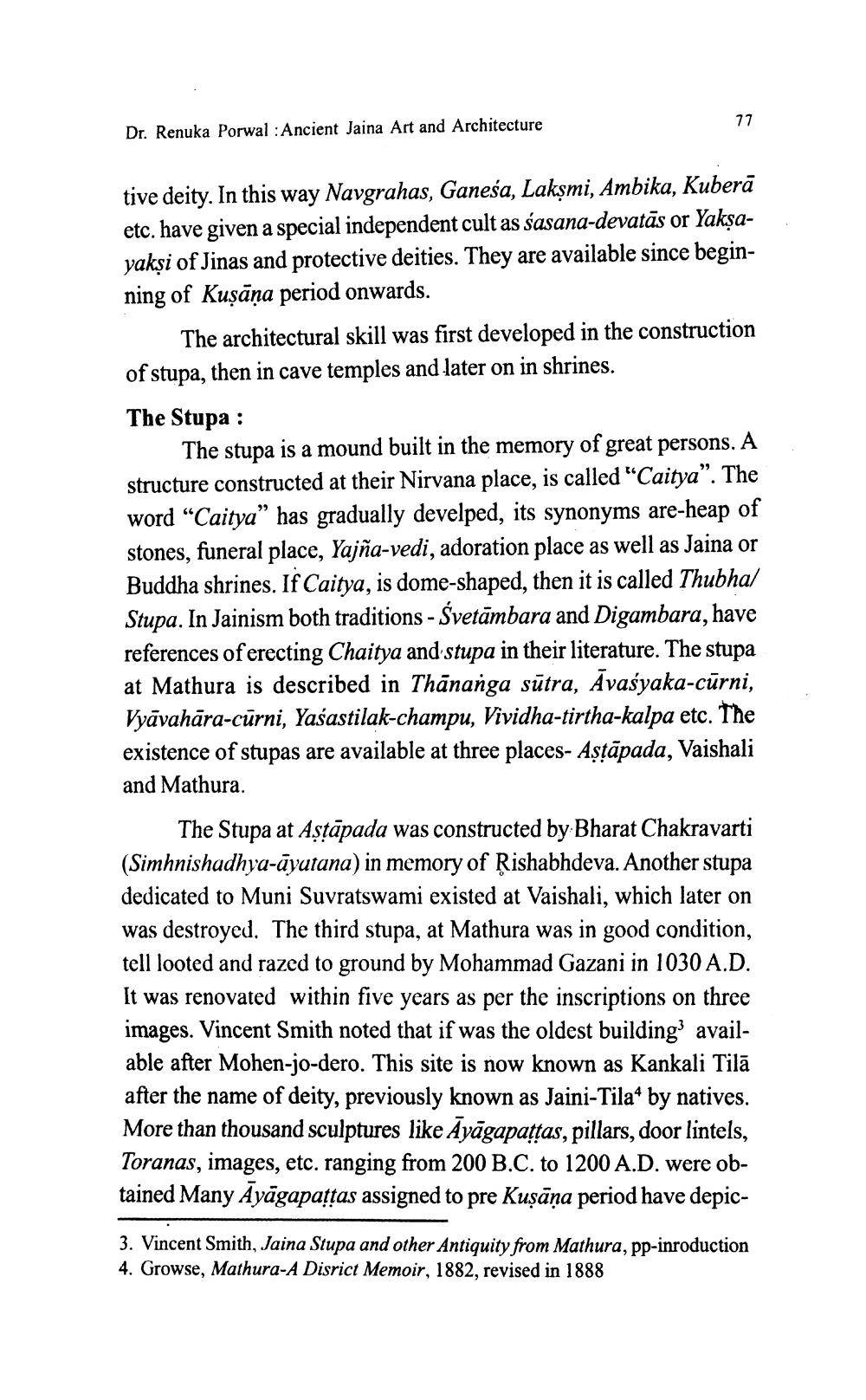________________
77
Dr. Renuka Porwal : Ancient Jaina Art and Architecture
tive deity. In this way Navgrahas, Ganesa, Lakşmi, Ambika, Kuberā etc. have given a special independent cult as sasana-devatās or Yakşayakși of Jinas and protective deities. They are available since beginning of Kuşāņa period onwards.
The architectural skill was first developed in the construction of stupa, then in cave temples and later on in shrines. The Stupa :
The stupa is a mound built in the memory of great persons. A structure constructed at their Nirvana place, is called "Caitya”. The word “Caitya” has gradually develped, its synonyms are-heap of stones, funeral place, Yajña-vedi, adoration place as well as Jaina or Buddha shrines. If Caitya, is dome-shaped, then it is called Thubhal Stupa. In Jainism both traditions - Svetāmbara and Digambara, have references of erecting Chaitya and stupa in their literature. The stupa at Mathura is described in Thānanga sūtra, Āvasyaka-cūrni, Vyāvahāra-cūrni, Yašastilak-champu, Vividha-tirtha-kalpa etc. The existence of stupas are available at three places- Astăpada, Vaishali and Mathura.
The Stupa at Astāpada was constructed by Bharat Chakravarti (Simhnishadhya-āyatana) in memory of Rishabhdeva. Another stupa dedicated to Muni Suvratswami existed at Vaishali, which later on was destroyed. The third stupa, at Mathura was in good condition, tell looted and razed to ground by Mohammad Gazani in 1030 A.D. It was renovated within five years as per the inscriptions on three images. Vincent Smith noted that if was the oldest building available after Mohen-jo-dero. This site is now known as Kankali Tilā after the name of deity, previously known as Jaini-Tila4 by natives. More than thousand sculptures like Āyāgapattas, pillars, door lintels, Toranas, images, etc. ranging from 200 B.C. to 1200 A.D. were obtained Many Āyāgapattas assigned to pre Kuşāņa period have depic
3. Vincent Smith, Jaina Stupa and other Antiquity from Mathura, pp-inroduction 4. Growse, Mathura-A Disrict Memoir, 1882, revised in 1888




